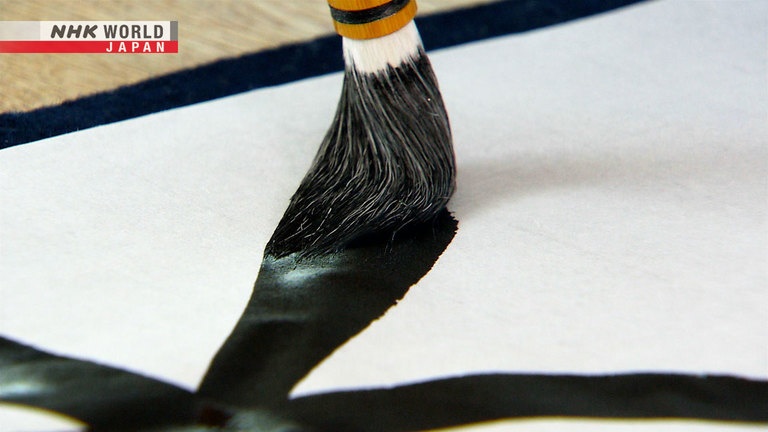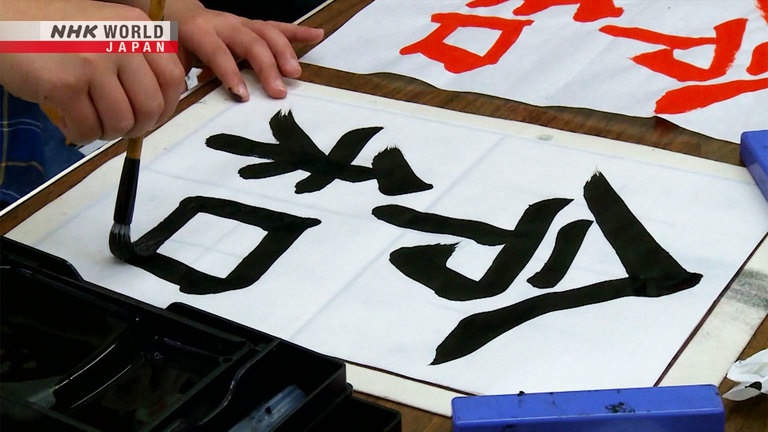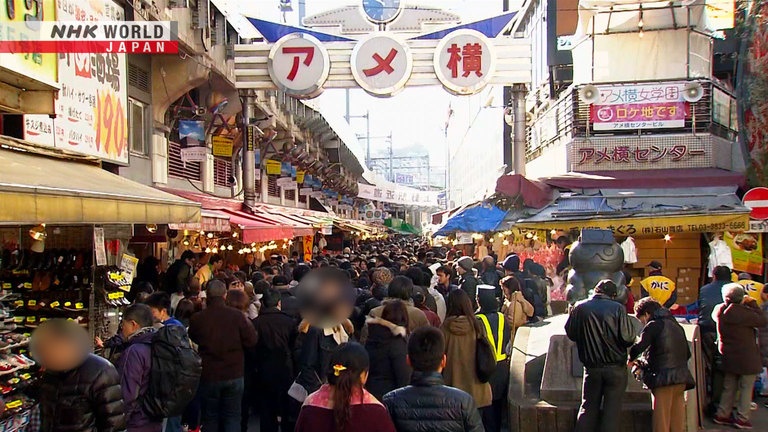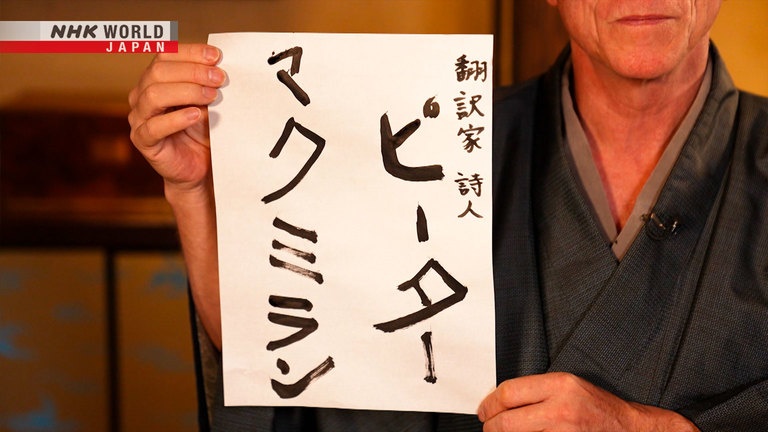Write
Written Japanese was developed and refined after Japan began using Chinese kanji characters in the early 5th century. This history is reflected in the many words related to kaku, or "to write."




Transcript
"Yukigesho."
"Karakurenai."
The Japanese language is rich in unique expressions that reflect nature and culture.
Magical Japanese.
Today's theme is "kaku," or "to write."
Japan first began using Chinese kanji characters in the beginning of the fifth century.
Written Japanese was then further developed and refined, leading to many words related to writing.
I find that when I concentrate on writing each letter, it really relaxes my mind...
Hello! I'm Peter MacMillan.
Until recently, Japanese people used brushes, rather than pens, to write.
Even today, writing with a brush can add a sense of formality.
So, a Japanese person might use a brush when sending New Year's greetings to their elders or superiors.
There is a name for this kind of brush culture in Japan.
"shodo."
"Shodo" is the Asian equivalent of calligraphy.
"Sho" is another reading for the character "kaku," or "to write," and "do" means "the way."
It suggests a continual process of development and improvement.
In Japan, as in China, "shodo" is associated with spiritual development.
It has long been appreciated as a traditional art form, and is widely practiced.
"shodo."
"Shodo" is not just about writing beautifully.
It also helps to train and discipline the mind.
You can find private calligraphy schools everywhere, and "shodo" is part of the public education curriculum.
By the way, the next phrase can give you some insight on how the Japanese people developed their relationship with writing.
"kakizome."
"Kaki" comes from "kaku," and "zome" means "the first."
The phrase refers to the first occasion to do "shodo" in the New Year, and also to the calligraphy that's produced.
"Kakizome" was originally practiced by the nobility, but in the Edo period, it spread to the general public.
Traditionally, people did "kakizome" on January 2nd, when they would write auspicious poems or phrases.
"kakizome."
The spread of "kakizome" among commoners was made possible by increasing literacy,
thanks to the so-called "terakoya," schools for commoners.
Merchant families, in particular, sent their children to "terakoya" to learn the skills they needed for bookkeeping,
such as simple arithmetic, reading and writing.
The image of a clerk diligently noting down sales figures in the corner of a shop gave rise to the following expression.
"kakiire doki."
"Ire" means "to write in," "doki" means "a period of time."
The phrase is commonly used in business to describe a busy time, when sales are booming.
Did you go anywhere over the holidays?
No, the supermarket I work for has its "kakiire doki," busiest time,
during the New Year holiday, so I couldn't take any days off.
"kakiire doki."
Japanese has traditionally been written vertically, from top to bottom.
There is an interesting expression that comes from this format.
"katagaki."
"Kata" is shoulder, "kaki" changes to "gaki" when preceded by another word.
"Katagaki" originally referred to the act of adding someone's title next to their name on a document.
The word comes from how, in traditional vertical writing, the title looked like it was perched on the name's shoulder.
Horizontal writing is more common today, but nonetheless, the expression has lived on to mean a person's title or role.
Can't you be a bit more responsible with your work?
I want you to live up to your "katagaki," title,
of floor manager.
"katagaki."
When I first came to Japan, I was surprised to learn that the same language uses several different scripts.
"Dog," for example, can be written "inu" in kanji, "inu" in hiragana, and "inu" in katakana.
It's remarkable to think that the Japanese people have been using all three scripts since they were children,
and properly distinguishing between them!
Hiragana and katakana are uniquely Japanese scripts that developed during the Heian Period.
Both started out as simplified versions of the kanji characters, that had been imported from China.
Katakana originated when people began leaving out strokes from kanji characters.
This was so that they could write in tight spaces.
Hiragana, on the other hand, is a fluid simplification of kanji.
It shares a deep connection with "shodo."
At first, hiragana was used mainly by women.
The two scripts fulfilled different purposes.
I suppose that's why they have both remained to this day, and... excuse me!
Am I boring you with this long explanation?
I can tell, because....
"kao ni kaite aru."
"Kao" means "face;" "kaite aru" comes from "kaku," and means something is written.
The phrase is used when you can tell what someone is feeling or thinking from their appearance.
I'm so excited about our trip tomorrow!
Yeah, me too.
Wait, you don't mean that, do you?
It's "kao ni kaite aru," written on your face!
"kao ni kaite aru."
I just started to learn calligraphy using a brush...
Speaking of brushes, let's take a look at the next brush-related proverb.
"Kobo ni mo fude no ayamari."
"Fude" is a brush, and "ayamari" is a mistake.
"Kobo" refers to Kukai, a Japanese Buddhist monk from the early Heian period.
Kukai is said to have been a master calligrapher.
Legend has it that he could write beautiful letters simultaneously with five brushes, using his mouth, both hands, and feet.
"Kobo ni mo fude no ayamari" means even a master like Kukai can sometimes make a mistake.
I was training to become a professional golfer, you know.
Watch this!
Oops...
Oh, sir, it's a perfect example of "Kobo ni mo fude no ayamari," even a master makes mistakes.
Hahaha...
"Kobo ni mo fude no ayamari."
So, what did you think of the program today?
If you're learning Japanese, speaking and listening are important, but writing can help you improve even faster.
That's all for now.
See you next time! Bye.